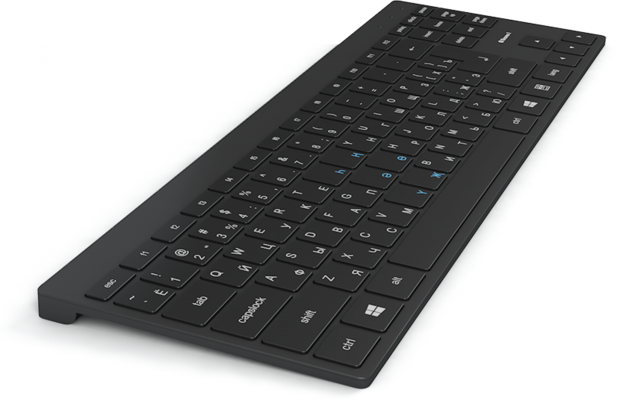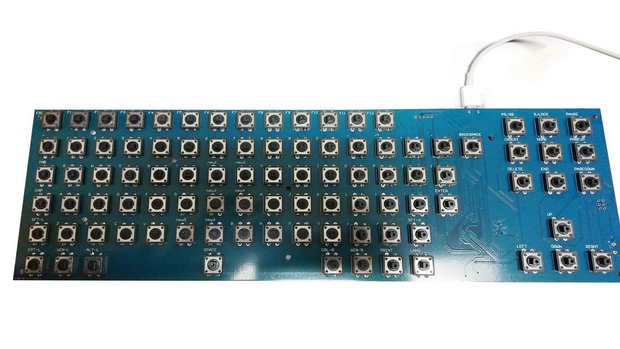Ildar Ayupov, Basma: ''We’re going to produce the Tatar keyboard in China, otherwise it will be expensive''
The Kazan studio of design Teoriya created the first Tatar keyboard called Basma. The developers added to the standard set of keys six Tatar letters (Ә, Ң, Җ, Ө, Ү, Һ) that allow the user to type Russian and Tatar texts without switching. Realnoe Vremya had an interview with the author of the project Ildar Ayupov, who told about who will like this keyboard, how much it will cost and why the production will be launched in China, not in Russia.
''We wanted to make a keyboard for ourselves, not for wide audience, but…''
Ildar, how did the idea to make a ''Tatar keyboard'' arise and for whom it can be useful?
The last two or three years, our studio has been actively engaged in Tatar projects: we make books, textbooks, Internet portals and therefore we work a lot with Tatar texts. If you have ever typed a Tatar text, you perfectly know that it is very difficult to do — you have three different layouts (English, Russian, Tatar) and you constantly have to switch between them. Plus, when on one key at the same time there are, for example, the Russian '' Ц '' and Tatar ''Ө'', it is confusing and slows down the process. In fact, from all these tortures, there came up the idea of creating a full-fledged keyboard with Tatar keys.
At the initial stage, we wanted to make a keyboard for ourselves, not for a wider audience, but in the process it became clear that an individual project would be very expensive, so we decided to launch this product in large quantities so it paid off. As for the audience, it is quite specific — it is Tatar media, publishing houses and educational institutions. It also can be public sector, but it is probably not so topical here.
One of the ''hallmarks'' is the location of the Tatar keys in the center of the keyboard so the user does not need to relearn how to type. Is the idea of your team or you asked for advice external experts?
We came to this by ourselves, we have experience in ergonomics. In the first variant we simply put the keys at the edges, but then it became clear that this will not work out: the majority of the Tatar characters are used quite often and it would be logical to place them in the middle. Actually, that is what we did.
In addition, we split the keyboard in half as do people who type blindly. I would like to notice that the keyboard working by the same principle not the first year are produced by Microsoft.
Will the users have to relearn? I think there will be some discomfort, however, both right and left hands will remain with ''their'' keys. We tried to work and all have tested on ourselves — everything was absolutely fine.

''In the first variant we simply put the keys at the edges, but then it became clear that this will not work out: the majority of the Tatar characters are used quite often and it would be logical to place them in the middle.'' Photo: teorius.ru
''Basma will be a little more expensive than usual keyboard — somewhere 1,5 times''
There are several similar by format and theme projects: keyboard for tablets with the Bashkir and Tatar layouts from a developer from Ufa, then Dzhakhat for Chuvash and Tatars. How does Basma differ from its ''precursors''?
The thing is that the layout of Dzhakhat does not solve the problem completely. If I'm not mistaken (the last time I encountered it was back in the 1990's), it just put Tatar letters on the figures. Keyboard for tablets also does not help much, since we're talking about professional work with the text, which in most cases is done on a PC.
Judging by how old Dzhakhat is, the work on creation of the Tatar keyboard has long started, but over that time there was not a single final product. Why from your point of view?
You see, the creation of electronic devices is a very complex process. We realized this when you got into this business. First, we tried to produce in Russia, but it turned out that some of the things are not produced in our country or ask for this some incredible money. The same situation is with the experts — they are either do not exist or they are very expensive. So we're going to produce the keyboard in China, otherwise it will be very expensive — 10,000-20,000 rubles, just no one will buy.
If everything works out with China, how much will the keyboard cost?
We expect 2,000-3,000 rubles. It will be more expensive than the usual keyboard about 1,5 times.

''Internals'' of the keyboard are already ready: microelectronic chip and circuit board. Now we need to add body, put the keys and a little to alter the printed circuit board, because at the moment it's a prototype.'' Photo: planeta.ru
''What school will buy a keyboard for iMac? They all use Windows''
At what stage is your project? As far as I know, now you have a microelectronic chip ready?
Yes, ''internals'' of the keyboard are already ready: microelectronic chip and circuit board. Now we need to add body, put the keys and a little to alter the printed circuit board, because at the moment it's a prototype with which we tested if everything works and if it is ''friendly'' with Windows.
Does it work with Macs too?
Actually, we ourselves use iMac, not Windows, so we will definitely make the keyboard for iMac. We just thought that the audience of Windows is dozens of times wider and for the first batch it is better to make a product under it. For example, if we supply our product to educational institutions, what school will buy keyboard for iMac? There is always Windows. In general, this is not a problem, the alteration would not require any additional resources.
Ildar, how much have you invested in this project?
We have already invested several hundreds of thousands of rubles. Now we are raising 1 million rubles to set up production – it is the process between what we have now and the finished product. We need to define the parameters, to create a body, keys and other details. Besides, we will have to invest another 1 million rubles of our own funds to produce the first batch.